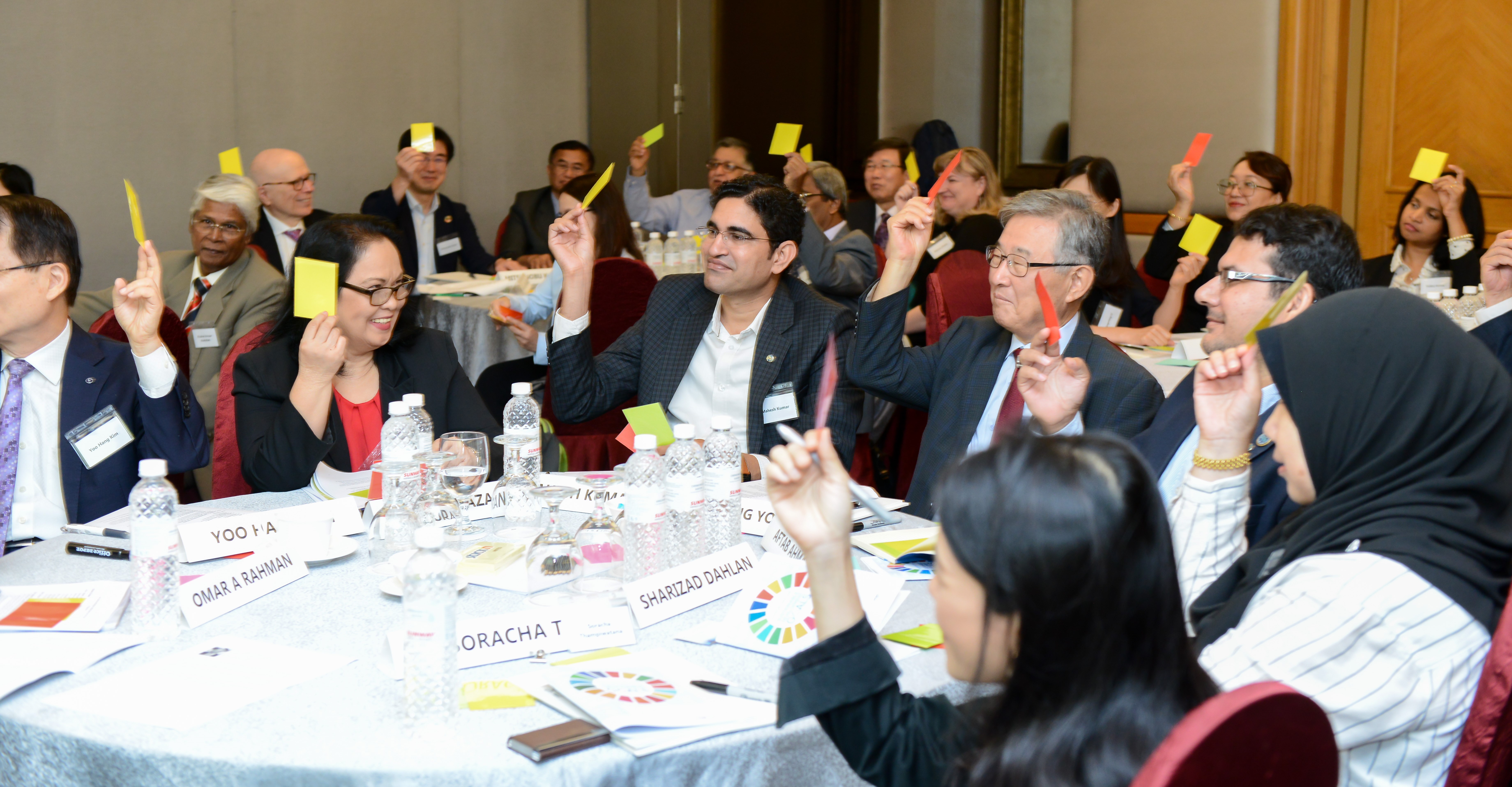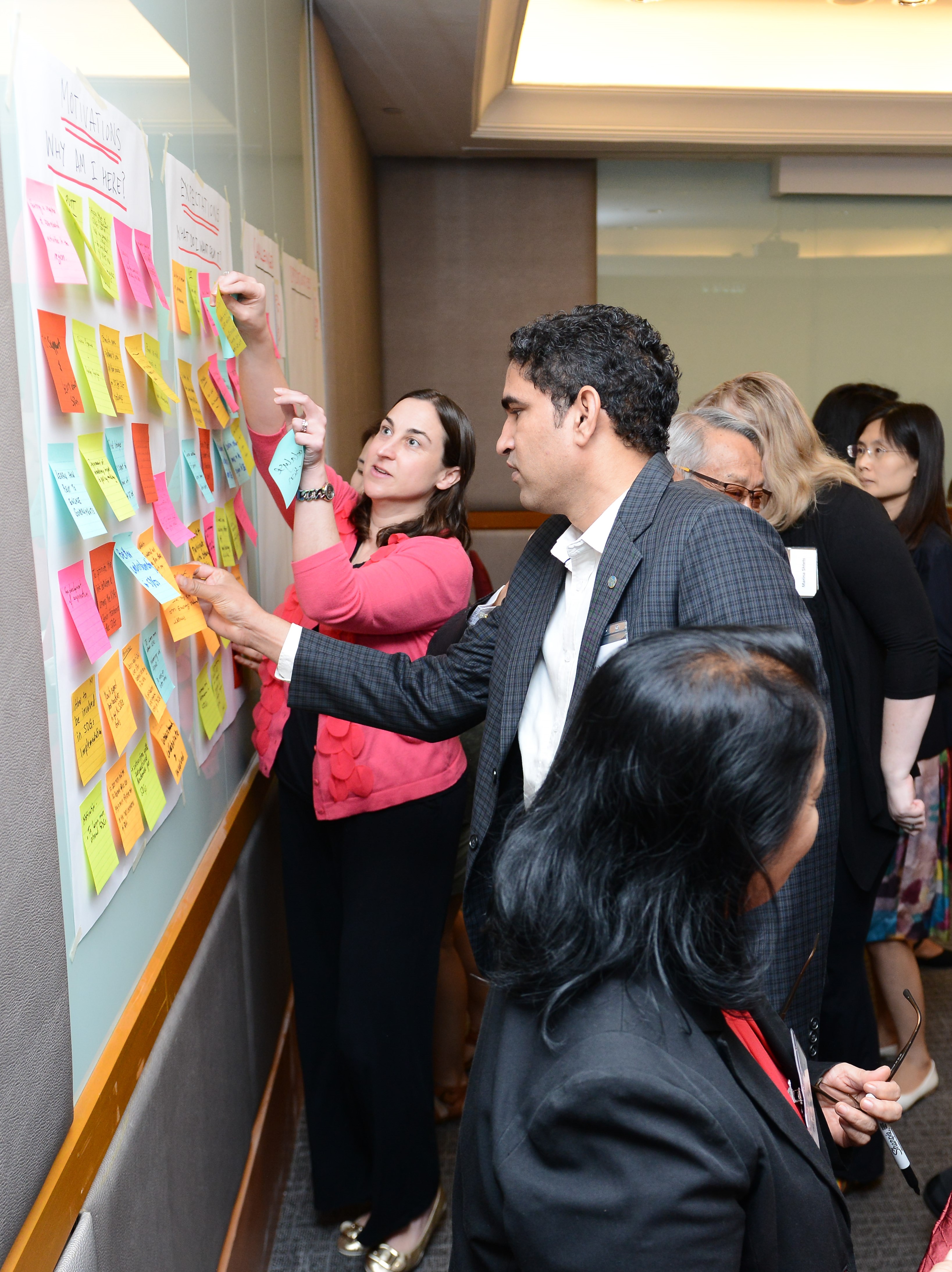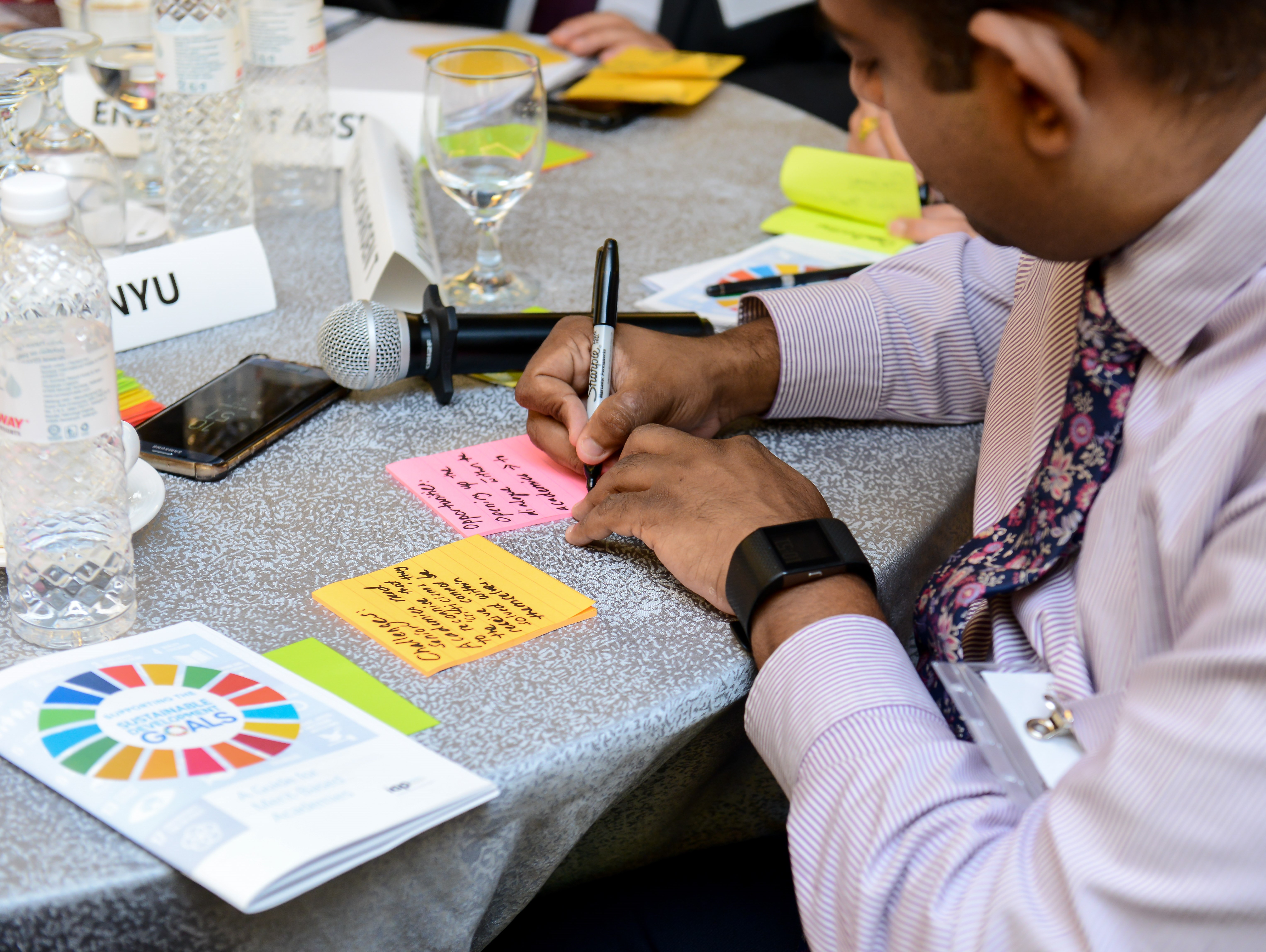Engaging the world’s national science academies and their regional networks on the implementation of the SDGs. Led by the InterAcademy Partnership (IAP) and linked primarily to SDG 17.
Description
Representing a key constituency of the global science community, the InterAcademy Partnership (IAP) has explored how merit-based academies are helping to implement the SDGs, and where there are opportunities for more sustained, systemic involvement. These academies and their networks can be important contributors to the implementation of the SDGs, as providers of independent science advice and agents for capacity building and change in national science systems. The three-year, actions-oriented project has been designed to help academies improve their understanding of the SDGs and the UN system supporting them and explore opportunities for more active and effective engagement.
The project objectives were (1) to review the current landscape for global scientific advice and input in relation to the SDGs; identifying strengths, weaknesses and opportunities for a more effective advisory system (mobilisation); (2) to strengthen the global science community’s capacity to contribute to high-quality, evidence-based advice to policymakers, and help build the capacity of science academies to play their part in this system (capacity building); and (3) to foster dialogue, collaboration and coordination among providers of global scientific advice, and in doing so, strengthen the global science-policy interface (partnership). <br />
<br />
Informed by the project’s 2016/7 membership survey, the project experimented with different ways scientists can engage with UN implementation systems. Framed around UN policy processes, timelines and milestones the project endeavoured to be inclusive, involving multiple partners especially young researchers, and to be relevant to different audiences and contexts. Throughout, academies were encouraged to engage with their respective national and regional implementation and review processes, especially those whose governments were preparing Voluntary National Reviews. A guide was prepared to help scientists navigate their way through the complex UN system for the SDGs and familiarise themselves with the main entry points for science. Bringing together scientists and policymakers, four regional workshops were delivered to help share good practice and identify different ways academies can support the implementation of the SDGs.<br />
<br />
To be published by May 2019, the project report provides an account of what was learned along the way, providing insight and inspiration for science academies and the wider community. It includes case studies as examples of good practice, in order to motivate others to get involved.
Methods of engagement and participation: online surveys and updates, actions-oriented regional workshops, engaging with different parts of the UN system (global and regional) and national implementation systems.
An international working group of experts was assembled from academy and other nominations and supported by a project director and the IAP secretariat. The working group benefited from inputs of stakeholders including local, national and regional policymakers, at each of its four meetings (New York, August 2016; Paris, February 2017; Beijing, November 2017; and Bern, September 2018).
A membership survey at the start of the project informed its subsequent design to ensure that it was demand-driven and evidence-based.
Project and IAP representatives participated in a range of UN mechanisms designed to feed STI into the SDGs, including the UN STI Multistakeholder Fora, UN annual regional fora and the Global Sustainable Development Report (GSDR) 2019. Four regional workshops, bringing together academicians, policy makers and other practitioners, provided opportunities to share good practice and explore lessons learned. Feedback surveys were built into these initiatives to ensure that learning was at their core.
A follow-up of the membership survey at the start of the project will demonstrate an improved understanding of the SDGs and enhanced engagement in actions for their implementation. It is anticipated that additional funding can be secured for project follow-up, to include monitoring and assessment of the project’s impacts.
Numerous senior and young academies have indicated that this project has raised the profile of the SDGs for them and stimulated discussion within their membership on how best to support the SDGs. With a strong emphasis on dissemination and outreach, the project has effected modest change: some academies have reported that the project has been a “bit of a wake-up call” and “put the SDGs on our radar”. The Global Young Academy now has a programme dedicated to the SDGs.
The four regional workshops for academy members and representatives of the policymaking community delivered voluntary action plans with interventions at regional, national, institutional and individual levels. Examples of good practice and lessons learned have been shared throughout: these include academies participating in their national sustainability platforms and critiquing their Voluntary National Reviews.
The project benefited throughout from IAP, the Global Young Academy (GYA) and National Young Academies working together and drawing on their respective strengths.
Challenges included the fact that academies are many and varied in terms of their capacities and capabilities: some have good political connections and national visibility; others are struggling and don’t even have support staff. The project endeavoured to identify a broad range of actions that could apply to academies, whether they are rich or poor, new or old, large or small.
A common reaction to this project from the academies was that they would need more money to engage with the SDGs. The project got them thinking about different ways of working, using the precious, finite resource they already have at their disposal more effectively. For example:
• are our current ways of working having any impact?
• how are we using different kinds of science for the SDGs?
• how are we engaging our members?
• who are we speaking to? who should we be speaking to?
• where and how do we need to build our own capacity?
It is anticipated that project methodology – such as feedback surveys and more interactive workshops – will also be embedded in future IAP initiatives.
The report concludes there are significant opportunities for academies and the wider scientific community to support global, regional and national implementation processes. Academies can be working more effectively at the science-policy interface, helping to bridge national gaps caused by weak inter-ministerial and inter-UN agency coordination and by professional silos; leveraging intellectual capital /networks of experts to inform and support policymakers; sensitising academia to the SDGs; and advocating for a strong, independent science advisory mechanism within the UN, supported by global networks of knowledge providers. <br />
<br />
Recommendations are made to the UN system; IAP, its regional networks and national members; the GYA and national young academies; and the wider science community, with a view to improving integration and mutual learning. These will be published by May 2019.<br />
<br />
A checklist (“How you can support the implementation of the SDGs”) is provided to help interested scientists get started or find out more. <br />
<br />
Early indications of impact:<br />
• The world’s academies (national and young) and their regional networks are more aware of the SDGs and the various ways they can support them.<br />
• The project has seeded good practice in some regions and countries and informed the Global Young Academy’s SDGs programme.<br />
• IAP is supporting the STC Major Group by participating in consultations, contributing to STC position statements, and supporting the peer review of the Global Sustainable Development Report 2019 alongside the STC Major Group co-convenors.<br />
• The academies have engaged with the UN Regional Commissions and their respective annual fora: the European academies’ network, EASAC, continues to engage with UNECE.
• IAP project page: http://www.interacademies.org/36061.aspx
• Main outputs to-date:
o Membership survey: http://www.interacademies.org/36188/Results-of-the-Survey-of-the-Academ…
o Supporting the SDGs: A Guide for merit-based academies http://www.interacademies.org/37864/IAP_SDG_Guide
o Online database: http://www.interacademies.org/35255/SDG
• Global Young Academy SDGs programme: https://globalyoungacademy.net/sdgs/
• Four regional workshops for academies: http://www.interacademies.org/47529/Regional-workshops-for-academies-on…-
o IAP-IANAS workshop, May 2018 (Americas): http://www.interacademies.org/46583/IANAS-academies-meet-to-discuss-how…
o IAP-AASSA workshop, August 2018 (Asia): https://globalyoungacademy.net/regional-iap-aassa-meeting-how-can-acade…
o IAP-EASAC workshop and here, September 2018 (Europe): https://globalyoungacademy.net/regional-iap-easac-meeting-how-can-acade…
o IAP-NASAC workshop, September 2018 (Africa): http://nasaconline.org/index.php/2018/10/26/iap-nasac-regional-workshop…
• http://sdg.iisd.org/commentary/guest-articles/demystifying-the-sdgs-the…
• Kai, F and Elliott, T (2017) Bulletin of the Chinese Academy of Sciences 31 (4) Progress report on IAP’s project “Improving scientific input to global policymaking” (p.199)
• OECD STI Global Outlook 2018: figure on page 113 is taken from the IAP Guide to the SDGs: https://www.oecd-ilibrary.org/science-and-technology/oecd-science-techn…
• Stoepler, T., Alisic, E. and Elliott, T. (2019 in press). Supporting the Sustainable Development Goals: The Role of Young Academy members. The Global Young Academy Connections magazine.
SDGS & Targets
Deliverables & Timeline
Resources mobilized
Partnership Progress
| Name | Description |
|---|
Feedback
Action Network


Timeline
Entity
SDGs
Region
- Europe
Geographical coverage
Photos



Website/More information
Countries
Contact Information
Tracey Elliott, Dr
